As the UK Carrier Strike Group (CSG25) is set to begin its eight-month Operation Highmast, the Royal Air Force has underlined the critical role of its Air Mobility Force, describing it as essential to the success and sustainability of the UK’s naval power projection.
In a feature published by the RAF, the service highlights its contribution to the deployment, which includes rapid resupply, personnel movement, medical evacuation, and air-to-air refuelling across vast distances.
“The RAF Air Mobility Force will supply the Voyager, C-17, and A400M during this important Operation,” said Group Captain Andy McIntyre, Commander of the Air Mobility Air Wing.
“We are providing air-to-air refuelling with many Voyagers along the route, as well as logistical support from C-17 and A400M, including pre-positioning supplies and personnel. We are also ready for aeromedical recovery if needed.”
According to the RAF, the scope of air mobility goes well beyond cargo transport. It enables rapid response, ensures freedom of movement, and supports the joint operations of 13 participating nations. The ability to maintain secure air and sea lanes, while adapting to changes in mission plans, is seen as central to CSG25’s success.
“What sets the RAF apart is our speed and range,” McIntyre continued. “We can deploy over long distances with meaningful payloads. We can be wherever the CSG needs us ahead of time, managing changes to their program and offering support along the way.”
The update emphasised that the Voyager fleet is providing critical air-to-air refuelling, while C-17 Globemasters and A400M Atlas aircraft are tasked with pre-positioning equipment, moving personnel, and delivering essential freight—functions the RAF describes as key to sustaining operations at sea.
The RAF also warned that without a reliable resupply chain, even the agility of a modern strike group can be compromised. With limited air defence and long-distance operations, particularly in the Indo-Pacific, maintaining supply lines while keeping a low profile is a strategic balancing act that requires detailed planning.
The 65,000-tonne aircraft carrier at the centre of the group is described by the RAF as depending on “proximity to objectives, availability of key resupply points, and the ability to secure air and sea routes.” These elements, according to the service, have been central to air mobility planning for years and are now being put to the test in a dynamic maritime environment.
As Operation Highmast kicks off, the RAF says its air mobility capability will continue to serve as a vital enabler—not just for logistics, but also for medical support, rapid deployment, and maintaining strategic reach, underscoring the UK’s ability to respond to global threats and reinforce its status as a leading military power.




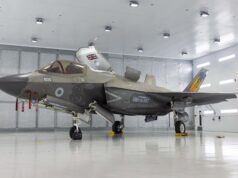
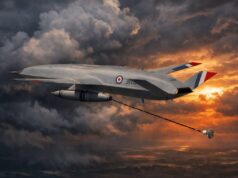

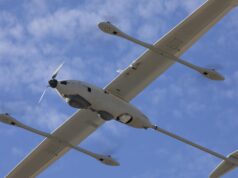

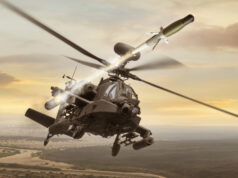
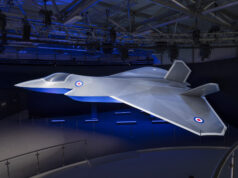

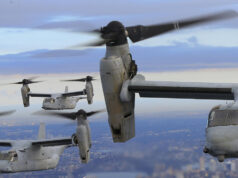

Some very strange language here.
Very reminiscent of the language around the Black Buck runs – whilst they were a great technical achievement the effects on the ground at Stanley could have been more effectively achieved using the laser guidance kits that were down South.
I don’t share the ‘we could hit the mainland narrative at all’…
Most of this wouldn’t be true if we had the three solids stores ships operational and enough F35B on board.
I would challenge this; nothing can replicate the reactional nature of Strat Air from a Logs perspective. During CSG21 we utilised them frequency to pre-position stores (especially with regard to covid-impacted program) for planned and emergent maintenance; deploy and recover a broken Wildcat; facilitate the recovery of the 200-person advance leave party from a location wheire there was no Civ-Air; aero-med critical casualties; and for re-fuelling the F-35Bs in the Med and Middle East to extend real life strike missions. None of which could be done by a solid support ship or additional F35B.
I’m not close to the planning of CSG25, but for FORTIS the RN had a dedicated augmented watchkeeper working in the Defence Supply Chain Operations and Movements HQs purely to facilitate the Strat Logs Support (Air and RoRo), it’s a really significant role.
It’s not sexy, but air-mobility at this quality and scale still sets us apart as a higher-level global force.
It’s good the services are working together. They have to for maximum effect.
And this is part of the operation many people don’t relise is happening.The logistics tail is why so few nations can provide globally deployable aircraft carriers. The support required is substantial. A Voyager was also part of the 2021 deployment. Supporting the F35s with A2A refueling when required. Just like Voyagers support USN Super Hornets in the Red Sea/Gulf Region. Carrier capable A2A refueling capability is nice to have, but it will never be better than a Voyager.
A voyager isn’t going to last long in a peer shooting war. Carrier based tactical refueling has no substitute.
Indeed, carrier A2A isn’t really that much of a thing.
The ‘buddy’ F18 effort isn’t that significant compared to a Voyager.
Thete was talk of the tanker taking a Chinook to act a COD. Does anyone know if this is still a plan.
Not sure I understand. Do you mean replenish a Chinook? Voyager cannot refuel helicopters. A400M now can but we don’t have refuelling kits for A400M. Also I’m not sure we have Chinooks fitted with probes
They are taking chinook with them, not sure what they plan to do with it.
Huh ?
Bit confused by that… are you saying a Voyager was carrying a Chinook, Flying with one or are you talking about the Tide class Tanker ?
In reality one of the very big advantage a UK carrier battle group could have compared to any likely enemy is the fact the UK has sovereign airfields if most seas and oceans it would undertake operations in. This means that it can with relative ease leaver strategic air power to support a carrier battle group in almost every likely theatre..
This is why land based long range:
1) AEW
2) ASW
3) air to air refuelling
4) strategic air life
5) ISTAR
Can all essentially work with and enhance the carrier battlegroup.
Oh i sure that was said before as justification to dump the carriers. Did the raf not shrink the world by a few thousand miles so everywhere could be covered.
Bot test3
Putin declares an Easter truce
Oh dear, what’s going on here now ?
comment awaiting moderation ?
It’s good to see the RN and RAF working so closely on CSG 25. It’s a world class capability for both forces.
So if air life is the back bone why scrap 20 hercs and not replace them? Seems a strange thing say its all that then cut the fleet. Weird and of course the CGS agreed to all this as stated in the press.
Someone was talking of rumours that the C-17s are for the chop, this release would suggest its at least being talked about.
great
Where the contribution of the RAF is under reported it does show the areas that the MoD need to improve for the RN. Two air craft functions spring to mind, air to air refueling and the delivery of essential freight (COD).
Here is the issue with the QE design carriers, with no CAT and TRAP the range of air craft that we can use for these two functions is limited. As much as I wilol get some stick the only current aircraft that could fulfil the air to air refueling role, COD role, possibly the AEW role and an extended range ASW role is the V-22 Osprey. If I remeber correctly there were design studies for the AEW and ASW versions of Osprey.
Yes I know cost, however, by saving cost on the design and construction of the QE carriers it would mean that the aircraft cost for STOVL operation would be more expensive. Second issue with cost, by using Voyagers, A-400s and C-17s for operations that for most part should be carried out by the carrier airwing carrier operations are not as flexible as they should or could be. Plus the cost of the strategic airlift capability aircraft needs to be taken into account. Also if we went down the C-2 E-2 route it means CAT and TRAP, if we go down the UAV route such as MQ-25 MQ-28 it also means CAT and TRAP but still no long range (1,000 mile or 500 mile combat range) COD, Medvac etc.
So we have for carrier operations three options, depend on the limited RAF Strategic Airlift/Tanker support worldwide. This is not a very good use of strategic assets especially in a wartime situation. Purchase aircraft that is more expensive per unit cost such as the V-22 or V-280. The V-280 does look like it could be a good option cost wise but it does need to undergo testing in the air to air refueling, be able to take a Merlin ASW suite and test a AEW package. Although per unit cost is more expensive than the classical CATOBAR aircraft they would be able to operate from the carriers in their current configuration and add to the defence of the UK. Final solution would be to rebuild the carriers when they come in for a major refit, possibly at the 10-15 year stage of operational life. With the possibility of anything from 1-3 E-MALS and a three wire arrestor system. It would also mean some alterations to the deck port side and possibly the removal of the ski jump if we went for the full three cat layout. To be honest a single CAT does not make finacial sense as a full arrestor system would still be needed. The same as a 1.5 CAT layout, (1 full CAT and 1 for UAVs).
So my only conclusion is either we rebuild the carriers for three CATS or we by something like the V-22/V-280. However we would need anything from 48-60 of these airframes in three diffrent versions ( 1 sqn AEW, 1 sqn ASW and 2 sqns of multi role transport)and some role on role of capability inserts such as air to air refueling tanks. It looks as if the V280 will come in at about the same proce as an Apache.
Can’t reply.
Hi Ron, so there is very little cross-over from the strategic air mentioned here and the organic support from the Carrier Strike Group other than for hypotheical refuelling duties. An obvious comparison would be a USN amphibious readiness group; it deploys with 12x V22s and 4x CH53s but still have 2x KC-130 and 1x C-17 allocated to support with logistics lift requirements.
The Mk4 Merlins will conduct the Medium Intra-Theatre Lift (MITL) requirements (albeit not as flexible as a V-22) with a c.6-700mile range.
Interestingly we conducted a study during CSG21 and the average weight of intra-theatre lift was under 20Kg for stores (normally electronic components or defence engagement stores/provisions). So, the additional of the Malloy drones will make a significant difference in saving Merlin hours here. Likely the Merlins only used for larger sorties, VERTREP and passenger transfers.
Really good commentary ref the CAT/TRAP issue. Cheers.